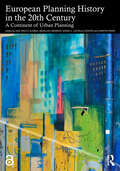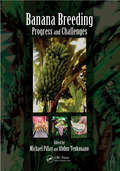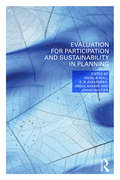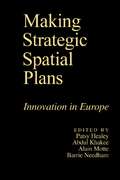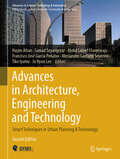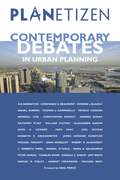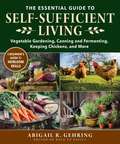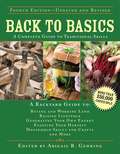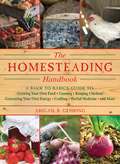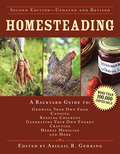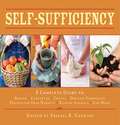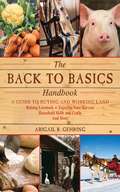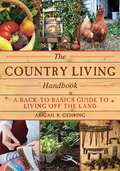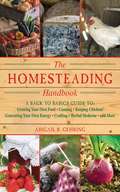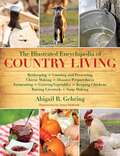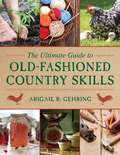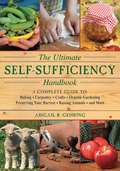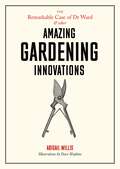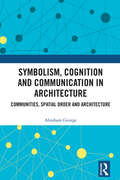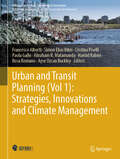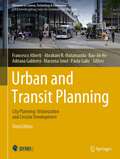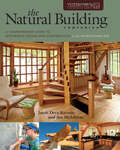- Table View
- List View
European Planning History in the 20th Century: A Continent of Urban Planning
by Max Welch Guerra Abdellah Abarkan Martin Pekár Castrillo Romón, María A. Victoria GrauThe history of Europe in the 20th century is closely tied to the history of urban planning. Social and economic progress but also the brute treatment of people and nature throughout Europe were possible due to the use of urban planning and the other levels of spatial planning. Thereby, planning has constituted itself in Europe as an international subject. Since its emergence, through intense exchange but also competition, despite country differences, planning has developed as a European field of practice and scientific discipline. Planning is here much more than the addition of individual histories; however, historiography has treated this history very selective regarding geography and content. This book searches for an understanding of the historiography of planning in a European dimension. Scholars from Eastern and Western, Southern and Northern Europe address the issues of the public led production of city and the social functions of urban planning in capitalist and state-socialist countries. The examined examples include Poland and USSR, Czech Republic and Slovakia, UK, Netherlands, Germany, France, Portugal and Spain, Italy, and Sweden. The book will be of interest to students and scholars for Urbanism, Urban/Town Planning, Spatial Planning, Spatial Politics, Urban Development, Urban Policies, Planning History and European History of the 20th Century.
Banana Breeding: Progress and Challenges
by Michael Pillay Abdou TenkouanoWith the current world population growth of 1.2%, the earth can expect to house 9-10 billion people by 2050. Food production, too, must increase to accommodate these numbers. Easy growing, high calorie, nutritious foods, such as bananas are the top priority as a solution to this imminent problem. The first comprehensive compendium on bananas in rec
Evaluation for Participation and Sustainability in Planning
by Johan Woltjer Angela Hull E. R. Alexander Abdul KhakeePlanning evaluation is required to establish the success of planning interventions – both of physical developments and new approaches. Yet this should not be a task undertaken purely by professionals without participation by those affected by the process and outcomes of the projects. This book provides case studies and advice on how to balance conservation with economic growth, the cost effectiveness of plans alongside the effects upon the community and the importance of engaging with all stakeholders involved in a project. Practical aspects of the evaluation process covered include: how evaluation is used in planning introducing new kinds of information or criteria alternative ways of collecting/presenting information how strategic planning objectives are implemented in local practice. International contributors provide empirical studies and cases of application which are of practical value to those involved in the evaluation of planning. The book concludes by offering a new paradigm – a locally oriented, context-specific, participatory and multi-disciplinary approach to planning evaluation.
Making Strategic Spatial Plans
by Barrie Needham Patsy Healey Abdul Khakee Alain MotteA pan-European survey of strategic planning issues in response to technological innovation and its spatial consequences, this text should interest all planners, geographers and others concerned wtih the planning and management of economic development.
Advances in Architecture, Engineering and Technology: Smart Techniques in Urban Planning & Technology (Advances in Science, Technology & Innovation)
by Abdul Lateef Olanrewaju Haşim Altan Ju Hyun Lee Tiko Iyamu Samad Sepasgozar Francisco José García Peñalvo Alessandro Gaetano SeverinoThis book summarizes the latest studies regarding innovation in urban design and planning. It shares many tips and insights about sustainable solutions for the issues facing transport systems, innovative digital technologies, and ICT trends. The book touches upon the need to integrate the three fields of Architecture, Engineering, and Technology that have become indispensable. This is intended to respond to the increasing human needs and population growth in cities on one hand and to develop a holistic approach that helps overcome challenges to sustainability and environment management on the other hand. With the power of engineering in practice, problems of design and development once considered too complex to be dealt with other than empirically, intuitively, or by trial and error, are now becoming more solvable and applicable. This book offers strategies and solutions that enable designers to bring together knowledge in the fields of architecture, engineering, and technology to overcome challenges facing in modern times.
An Indoor Air Quality Management Framework for Municipal Buildings in Developing Economies (Routledge Research Collections for Construction in Developing Countries)
by Clinton Ohis Aigbavboa Wellington Didibhuku Thwala Abdul-Majeed Mahamadu Mpho NdouThis book delves into the pivotal issue of Indoor Air Quality (IAQ) management in municipal buildings within developing economies, addressing a pressing need in today’s digital age, where individuals spend over 70% of their time indoors. With a strong focus on enhancing environmental quality, this book presents theoretical frameworks and practical recommendations designed explicitly for stakeholders in the higher education sector, encompassing both public and private institutions.As institutions strive to improve their learning environments, this book aligns with global Sustainable Development Goals (SDGs), highlighting the vital connection between effective IAQ management and the health and well-being of the institutional community, including students and staff members. It provides a comprehensive framework that advocates for improved IAQ management and emphasises the importance of quality education and lifelong learning.Furthermore, this book serves as a valuable resource for green building regulatory bodies, ensuring adherence to best practices in IAQ management within municipal buildings. By providing actionable strategies grounded on recent literature, the book is an essential guide for researchers and policymakers seeking to navigate the theoretical and empirical dimensions of IAQ management. Moreover, this book asserts that enhancing IAQ is necessary not only for regulatory compliance and community well-being but also as a vital investment in the academic and operational success of municipal buildings in developing economies.
Planetizen's Contemporary Debates in Urban Planning
by Abhijeet Chavan Christian Peralta Christopher Steins Abhijeet PlanetizenPlanetizen's Contemporary Debates in Urban Planning is a fascinating review of major topics and issues discussed in the field of urban planning, assembled by editors at Planetizen, the leading source of news and information for the planning and development community on the web. The book brings together a wide range of editorial and discussion topics, coupled with commentary and overviews to create an enlightening record of the continuously evolving philosophy of building and managing cities. The book's contributors include the most well-known experts in the planning and design fields, among them James Howard Kunstler, Alex Garvin, Andres Duany, Joel Kotkin, and Wendell Cox. These and other prominent thinkers offer passionate debates and thought-provoking commentary on the most important and controversial topics in the field of urban planning and design: gentrification, eminent domain, the philosophical divide between the Smart Growth community, libertarians and New Urbanists, regional growth patterns, urban design trends, transportation systems, and reaction to disasters such as Katrina and 9/11 that changed the way we look at cities and security. Planetizen's Contemporary Debates in Urban Planning provides readers with a unique and accessible introduction to a broad array of ideas and perspectives. With the increasing awareness of the need for sound urban planning to ensure the economic, environmental, and social health of modern society, Planetizen's Contemporary Debates in Urban Planning gives professionals in the field and concerned citizens alike a deeper understanding of the critical, complex issues that continue to challenge urban planners, designers, and developers.
The Essential Guide to Self-Sufficient Living: Vegetable Gardening, Canning and Fermenting, Keeping Chickens, and More
by Abigail GehringGrow your own vegetables and herbs, indoors in containers or outside in a garden. Raise chickens or goats. Build a beehive. Make your own nontoxic cleaning sprays. And more! Gehring&’s books on country living have sold more than 500,000 copies. In this book, she offers a guide to homesteading skills that is as charming as it is practical. Full of sweet illustrations and gorgeous photographs, step-by-step instructions for essential skills such as building a chicken coop are interspersed with country lore and old-fashioned tips and tricks. Readers will learn how to:Container gardenRaise chickensChurn butterGrow vegetablesCan tomatoesBrew kombuchaMake shampooRepel garden pestsMilk a goatImprove garden soilMake strawberry-rhubarb jellyFerment vegetablesMake yogurtSprout grainsAnd more!The Essential Guide to Self-Sufficient Living combines the know-how of Back to Basics with the charm of The Farmer&’s Almanac. This is the perfect gift for anyone interested in a more self-sufficient, greener, country lifestyle.
Back to Basics: A Complete Guide to Traditional Skills (Back to Basics Guides)
by Abigail R. GehringAnyone who wants to learn basic living skills--the kind employed by our forefathers--and adapt them for a better life in the twenty-first century need look no further than this eminently useful, full-color guide. Countless readers have turned to Back to Basics for inspiration and instruction, escaping to an era before power saws and fast food restaurants and rediscovering the pleasures and challenges of a healthier, greener, and more self-sufficient lifestyle. Now newly updated, the hundreds of projects, step-by-step sequences, photographs, charts, and illustrations in Back to Basics will help you dye your own wool with plant pigments, graft trees, raise chickens, craft a hutch table with hand tools, and make treats such as blueberry peach jam and cheddar cheese. The truly ambitious will find instructions on how to build a log cabin or an adobe brick homestead. More than just practical advice, this is also a book for dreamers--even if you live in a city apartment you will find your imagination sparked, and there's no reason why you can't, for example, make a loom and weave a rag rug. Complete with tips for old-fashioned fun (square dancing calls, homemade toys, and kayaking tips), this may be the most thorough book on voluntary simplicity available.
Back to Basics: A Complete Guide to Traditional Skills (Back to Basics Guides)
by Abigail R. GehringAnyone who wants to learn basic living skills—the kind employed by our forefathers—and adapt them for a better life in the twenty-first century need look no further than this eminently useful, full-color guide. Countless readers have turned to Back to Basics for inspiration and instruction, escaping to an era before power saws and fast food restaurants and rediscovering the pleasures and challenges of a healthier, greener, and more self-sufficient lifestyle. Now newly updated, the hundreds of projects, step-by-step sequences, photographs, charts, and illustrations in Back to Basics will help you dye your own wool with plant pigments, graft trees, raise chickens, craft a hutch table with hand tools, and make treats such as blueberry peach jam and cheddar cheese. The truly ambitious will find instructions on how to build a log cabin or an adobe brick homestead. More than just practical advice, this is also a book for dreamers—even if you live in a city apartment you will find your imagination sparked, and there's no reason why you can't, for example, make a loom and weave a rag rug. Complete with tips for old-fashioned fun (square dancing calls, homemade toys, and kayaking tips), this may be the most thorough book on voluntary simplicity available.
Homesteading
by Abigail R. GehringWho doesn't want to shrink their carbon footprint, save money, and eat homegrown food whenever possible? Even readers who are very much on the grid will embrace this large, fully-illustrated guide on the basics of living the good, clean life. It's written with country lovers in mind--even those who currently live in the city. Whether you live in the city, the suburbs, or even the wilderness, there is plenty you can do to improve your life from a green perspective. Got sunlight? Start container gardening. With a few plants, fresh tomatoes, which then become canned tomato sauce, are a real option. Reduce electricity use by eating dinner by candlelight (using homemade candles, of course). Learn to use rainwater to augment water supplies. Make your own soap and hand lotion. Consider keeping chickens for the eggs. From what to eat to supporting sustainable restaurants to avoiding dry cleaning, this book offers information on anything a homesteader needs--and more.
Homesteading: A Backyard Guide to Growing Your Own Food, Canning, Keeping Chickens, Generating Your Own Energy, Crafting, Herbal Medicine, and More (Back to Basics Guides)
by Abigail R. GehringThe companion to the bestseller Back to Basics for country, urban, and suburban folks-now fully updated!Who doesn't want to shrink their carbon footprint, save money, and eat homegrown food whenever possible? Even readers who are very much on the grid will embrace this large, fully illustrated guide on the basics of living the good, clean life. It's written with country lovers in mind-even those who currently live in the city.Whether you live in the city, the suburbs, or even the wilderness, there is plenty you can do to improve your life from a green perspective. Got sunlight? Start container gardening. With a few plants, fresh tomato sauce is a real option with your own homegrown fresh tomatoes. Reduce electricity use by eating dinner by candlelight (using homemade candles, of course). Learn to use rainwater to augment water supplies. Make your own soap and hand lotion. Consider keeping chickens for the eggs. From what to eat to supporting sustainable restaurants to avoiding dry cleaning, this book offers information on anything a homesteader needs-and more.
Self-Sufficiency: A Complete Guide to Baking, Carpentry, Crafts, Organic Gardening, Preserving Your Harvest, Raising Animals, and More! (Self-Sufficiency Series)
by Abigail R. GehringNow, more than ever, people across the country are turning toward simpler, greener, and quieter ways of living--whether they're urbanites or country folk. Following in the footsteps of Back to Basics and Homesteading, this large, fully-illustrated book provides the entire family with the information they need to make the shift toward self-sufficient living. Self-Sufficiency provides tips, advice, and detailed instructions on how to improve everyday life from an environmentally and organic perspective while keeping the focus on the family. Readers will learn how to plant a family garden and harvest the produce; can fruits and vegetables; bake bread and cookies; design interactive and engaging "green" projects; harness natural wind and solar energy to cook food and warm their homes; boil sap to make maple syrup; and build treehouses, furniture, and more. Also included are natural crafts readers can do with their kids, such as scrapbooking, making potato prints, dipping candles, and constructing seasonal decorations. Whether the goal is to live entirely off the grid or just to shrink their carbon footprints, families will find this book a thorough resource and a great inspiration.
The Back to Basics Handbook: A Guide to Buying and Working Land, Raising Livestock, Enjoying Your Harvest, Household Skills and Crafts, and More (Handbook Series)
by Abigail R. GehringAnyone who wants to learn basic living skills-the kind employed by our forefathers-and adapt them for a better life in the twenty-first century need look no further than this eminently useful, full-color guide. With hundreds of projects, step-by-step sequences, photographs, charts, and illustrations, The Back to Basics Handbook will help you dye your own wool with plant pigments, graft trees, raise chickens, craft a hutch table with hand tools, and make treats such as blueberry peach jam and cheddar cheese. The truly ambitious will find instructions on how to build a log cabin or an adobe brick homestead. More than just practical advice, this is also a book for dreamers- even if you live in a city apartment you will find your imagination sparked, and there's no reason why you can't, for example, make a loom and weave a rag rug. Complete with tips for old-fashioned fun (square dancing calls, homemade toys, and kayaking tips), this is the ultimate concise guide to voluntary simplicity.
The Country Living Handbook: A Back-to-Basics Guide to Living Off the Land (Handbook Series)
by Abigail R. GehringPacked with step-by-step instructions, useful tips, time-honored wisdom, and both illustrations and photographs, this compact guide has everything you need to dive into a more self-sufficient life. From canning and preserving to keeping chickens, fermenting vegetables to soap-making, Gehring covers all the basics in this easy-to-read, approachable collection. Topics covered include:Generating your own energyHerbal medicineCheese-makingMaple sugaringFarm mechanicsBuilding a smokehouseDyeing woolCompostingDisaster PreparednessAnd more!Whether you own one hundred acres or rent a studio apartment in the city, this book has plenty of ideas to inspire you. Learn how to build a log cabin or how to craft handmade paper; find out how to install a solar panel on your roof or brew your own tea from dried herbs; Cure a ham, bake a loaf of bread, or brew your own beer. This book has something for everyone.
The Good Living Guide to Country Skills: Wisdom for Growing Your Own Food, Raising Animals, Canning and Fermenting, and More
by Abigail R. GehringGehring’s books on country living have sold more than 500,000 copies. In this book, Gehring offers a guide to country living skills that is as charming as it is practical. Full of sweet illustrations and gorgeous photographs, step-by-step instructions for essential skills such as building a chicken coop are interspersed with country lore and old-fashioned tips and tricks.Readers will learn how to:Raise chickensMake candlesChurn butterGrow vegetablesMake jams and jelliesDry herbsFerment vegetablesMake cheeseAnd more!Good Living Guide to Country Skills combines the know-how of Back to Basics with the charm of The Farmer’s Almanac. Packaged in an attractive hardcover format and with a price that’s hard to beat, this is the perfect gift for anyone interested in a more self-sufficient, greener, country lifestyle.
The Homesteading Handbook: A Back to Basics Guide to Growing Your Own Food, Canning, Keeping Chickens, Generating Your Own Energy, Crafting, Herbal Medicine, and More (Handbook Series)
by Abigail R. GehringWith the rapid depletion of our planet's natural resources, we would all like to live a more self-sufficient lifestyle. But in the midst of an economic crisis, it's just as important to save money as it is to go green. As Gehring shows in this thorough but concise guide, being kind to Mother Earth can also mean being kind to your bank account! It doesn't matter where your homestead is located--farm, suburb, or even city. Wherever you live, The Homesteading Handbook can help you: Plan, plant, and harvest your own organic home garden. Enjoy fruits and vegetables year-round by canning, drying, and freezing. Build alternate energy devices by hand, such as solar panels or geothermal heat pumps. Differentiate between an edible puffball mushroom and a poisonous amanita. Prepare butternut squash soup using ingredients from your own garden. Conserve water by making a rain barrel or installing an irrigation system. Have fun and save cash by handcrafting items such as soap, potpourri, and paper. Experience the satisfaction that comes with self-sufficiency, as well as the assurance that you have done your part to help keep our planet green. The Homesteading Handbook is your roadmap to living in harmony with the land.
The Illustrated Encyclopedia of Country Living: Beekeeping, Canning and Preserving, Cheese Making, Disaster Preparedness, Fermenting, Growing Vegetables, Keeping Chickens, Raising Livestock, Soap Making, and more!
by Abigail R. GehringPacked with step-by-step instructions, useful tips, time-honored wisdom, and both illustrations and photographs, this might just be the most comprehensive guide to back to basics living ever published. Fans of "Back to Basics," "Homesteading," and "Self-Sufficiency" have been asking for a one-stop resource for all the subjects covered in that successful series. In response, Gehring has compiled a massive, beautifully presented, single volume that covers canning and preserving, keeping chickens, fermenting, soap-making, how to generate your own energy, how to build a log cabin, natural medicine, cheese-making, maple sugaring, farm mechanics, and much, much more. Whether you own one hundred acres or rent a studio apartment in the city, this book has plenty of ideas to inspire you. Learn how to build a log cabin or how to craft handmade paper; find out how to install a solar panel on your roof or brew your own tea from dried herbs; Cure a ham, bake a loaf of bread, or brew your own beer. This book has something for everyone.
The Ultimate Guide to Old-Fashioned Country Skills (Ultimate Guides)
by Abigail R. GehringWhether you're a suburbanite looking to live more simply or a die-hard homesteader interested in taking your garden to the next level, this guide is packed with step-by-step instructions, useful tips, vintage photographs and illustrations, and time-honored wisdom--creating one of the most comprehensive books on country skills available. This book is compiled of tested and practical experience passed down from generations of farmers and homesteaders.Here readers can learn about:Creating a vegetable gardenCanning and preservingKeeping poultrySoap makingNatural medicineBridge buildingFarm mechanicsCrop rotationCattle and dairyingThe basics of beekeepingForaging for wild foodFertilizing, soils, drainage, and irrigationBuilding a barnAnd much, much more!Success comes to the person who works the most efficiently--not simply the person who works the hardest. Learn invaluable advice and tips for how to create a sustainable lifestyle and live off the land.
The Ultimate Self-Sufficiency Handbook: A Complete Guide to Baking, Crafts, Gardening, Preserving Your Harvest, Raising Animals, and More (Self-Sufficiency Series)
by Abigail R. GehringThis compact guide provides advice, tips, and step-by-step instructions for hundreds of projects, offering the entire family the tools they need to make the shift toward self-sufficient living. Readers will learn to dip candles, bake bread, make maple syrup, start a vineyard, and much more. With special features for young homesteaders, this is an essential family guide to self-sufficient living. - Bake Pies, Cakes, and Bread- Grow Vegetables yy Raise Chickens - Keep Bees - Preserve Your Harvest- Cure Meats - Build a Treehouse- Spin Wool - Make a Toboggan - And Much More!
The Remarkable Case of Dr Ward and Other Amazing Gardening Innovations
by Abigail Willis'An amusing and well-illustrated gift book for anyone interested in gadgetry and the progress of garden history' - Gardens IllustratedPacked full of interesting anecdotes, this book will guide the reader through the advances of gardening history and the technology behind it.From secateurs to seed bombs, hybrids to ha-has, lawnmowers to land artists, the gardening world has long attracted innovators. This delightful book outlines the ways that horticulture and the landscape have changed. The fascinating and amusing short entries are accompanied by charming specially created illustrations, giving a special touch to this perfect gift.Topics covered include:Greenhouses and the ability to grow exotic plantsOrganic growing and the use of chemicalsAllotments and their role in food production between the warsTaxonomy and nomenclatureThe resurgence of topiaryClimate change and the challenges and opportunities it bringsPublic parks and the importance of recreational space'Abigail Willis's lively gallop through assorted horticultural topics is full of interesting nuggets' - Daily Mail'Every section of the book is informed and pithy, making this the kind of thoughtful, readable work often found on the bedside table' - The English GardenThis beautifully produced book is the ideal gift for the gardener in your life.
Symbolism, Cognition and Communication in Architecture: Communities, Spatial Order and Architecture
by Abraham GeorgeThis book discusses the role and significance of symbols and symbolism in graphical communication toward the establishment of meaningful architecture. It explores how these are effectively applied in architectural education for the empowerment of learners in various cultures around the world. The volume examines the developments in graphic representations while recognizing the importance of cognition and its perception in spatial terms. In a scenario where architectural education is at crossroads, facing challenges of a global nature, this book highlights the importance of understanding architectural curriculum and design subjects. The author discusses the issues of communicating the knowledge of architecture to heterogeneous groups of students and explains how design fields and learning in architecture can be modified through cognitive instructional methods. The book outlines the methodology to develop symbols and symbolic pedagogical tools for effective communication in architecture. The book will appeal to students, researchers, teachers and scholars of architecture, design, planning and visual communication. It will also be of interest to architects, artists, spatial designers, town planners, urban planners and professionals.
Urban and Transit Planning (Advances in Science, Technology & Innovation)
by Simon Elias Bibri Francesco Alberti Abraham R. Matamanda Paola Gallo Cristina Piselli Hamid Rabiei Rosa Romano Ayse Ozcan BuckleyThis book explores aspects of creating cities and structures with a focus on sustainability. It provides an analysis of contemporary methodologies, technologies, and principles essential for designing urban environments and buildings that significantly reduce environmental impact. Moreover, it emphasizes the importance of energy efficiency, resource conservation, and the integration of green spaces to enhance the quality of life for urban dwellers. Covering a broad spectrum of topics, from sustainable urban mobility to green architecture and smart city initiatives, this book serves as an invaluable resource for professionals, researchers, and students. Furthermore, it aims to inspire and guide those dedicated to developing a sustainable future through innovative and responsible urban planning and architectural design practices.
Urban and Transit Planning: City Planning: Urbanization and Circular Development (Advances in Science, Technology & Innovation)
by Francesco Alberti Abraham R. Matamanda Paola Gallo Adriana Galderisi Bao-Jie He Marzena SmolThis book represents a compilation of research in sustainable architecture and planning. Its main focus is offering strategies and solutions that help reducing of the negative impacts of buildings on the environment and emphasizing the suitable management of available resources. By tackling the topic of sustainability from a historical perspective and also as a vision for the future, the book in hands provides new horizons for engineers, urban planners and environmentalists interested in the optimization of resources, space development, and the ecosystem as a whole to address the complex unresolved problems our cities are facing. This book is a culmination of selected research papers from IEREK’s sixth edition of the International Conference on Urban Planning & Architectural Design for Sustainable Development (UPADSD) held online in collaboration with the University of Florence, Italy (2021) and the first edition of the International Conference on Circular Economy for Sustainable Development (CESD) held online in collaboration with the University of Salento, Lecce, Italy (2021).
The Natural Building Companion: A Comprehensive Guide to Integrative Design and Construction
by Jacob Deva Racusin Ace Mcarleton"Fun. Easy to Read...One of the best natural building books published in recent years."—Bill Steen, coauthor, The Straw Bale HouseNatural buildings not only bring satisfaction to their makers and joy to their occupants, they also leave the gentlest footprint on the environment. In this complete reference to natural building philosophy, design, and technique, Jacob Deva Racusin and Ace McArleton walk builders through planning and construction, offering step-by-step instructions on:• siting and site analysis• choosing materials• integrating basic structural considerations into a design• strategies for heating/cooling efficiency and moisture management• planning for acoustics• developing an integrative design• navigating budgeting, code compliance, and project management• creating the foundation, wall system, roof, and floors• selecting and making plasters and paints• evaluating options for mechanical and utility systems• protecting against fire and insects• integrating structures within landscape, climate, and human communities...and moreApplicable to building in climates that are cold and wet, hot and dry, or somewhere in-between, The Natural Building Companion provides the tools necessary to understand basic principles of building science, including structural and thermal engineering, and hydrodynamics. This guide offers thorough, up-to-date, and advanced installation details and performance characteristics of straw-bale, straw-clay, woodchip-clay, and cellulose wall systems, as well as earthen and stone wall systems and a variety of framing, roofing, flooring, mechanical system, and finishing options. This fully-illustrated volume informs professionals making the transition from conventional building, homeowners embarking on their own construction, or green builders who want comprehensive guidance on natural-building options.
